This post may contain affiliate links. Please read my disclosure.
Using a simple homemade pesto, this tagliatelle pesto makes for an ideal, quick pasta dish, ready in less than 20 minutes.
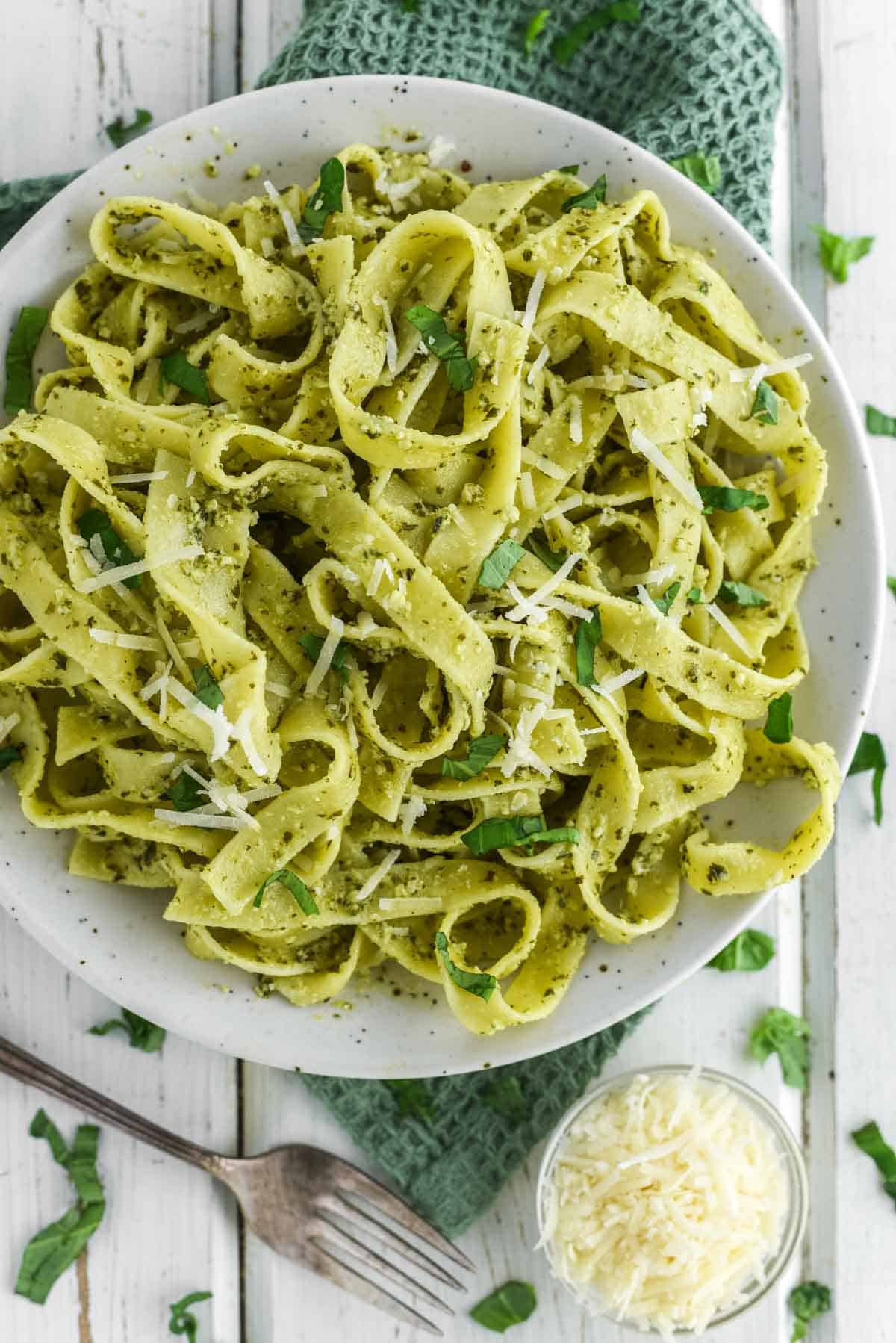
When it comes to pasta dishes, using pesto is what of my favorite ways to eat it - from pesto gnocchi to pasta al pesto to pesto goat cheese mac and cheese.
With pesto, it is both light, refreshing and colorful! It really brings the best of all worlds.
Why This Recipe Works
- Like many traditional Italian pasta recipes, this dish relies on a minimum amount of ingredients to yield a ton of flavors.
- In less than 20 minutes, you can go from preparing this dish to serving it on the dinner table.
- For those who appreciate the combination of basil and lemon, this pasta dish is tailor-made for you.
- Customize this dish to your liking by adding various alterations, whether it's introducing your favorite veggies or proteins such as chicken or shrimp.
Jump to:
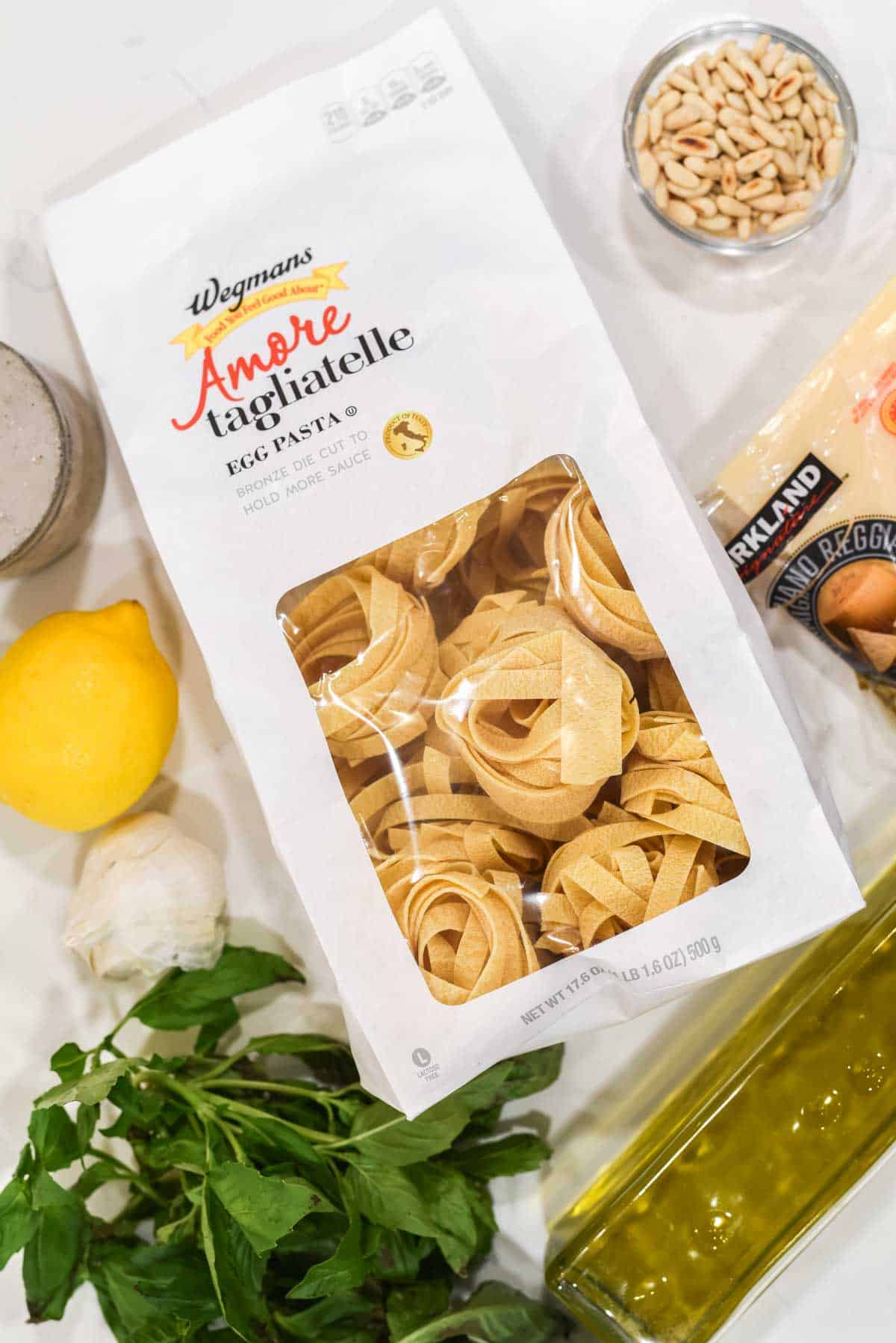
Ingredient Notes
- Pasta - Opt for high-quality tagliatelle pasta, which has a broad and flat shape, perfect for holding and complementing the pesto sauce.
- Pesto - This is a classic pesto sauce made from traditional ingredients, including basil, pine nuts, garlic, salt, extra virgin olive oil and Parmesan cheese.
- Lemon - Although not tradition, lemon juice provides essential acidity and an extra layer of brightness to the dish.
Ingredient Swaps
While this tagliatelle pesto is awesome, you can mix up the ingredients. Some variations include:
- Instead of tagliatelle, you want another long noodle like spaghetti, bucatini, angel hair or fettuccine.
- Replace pine nuts with almonds, walnuts, or pistachios for a diverse and slightly different nutty profile.
- Substitute Parmesan with Pecorino Romano or Asiago for a distinct cheese flavor. For a dairy-free option, nutritional yeast can be used.
- If you are looking for a gluten-free option, you can use zucchini to make pesto zoodles.
Step-by-Step Photos
Please note full ingredient list and instructions can be found in recipe card below.
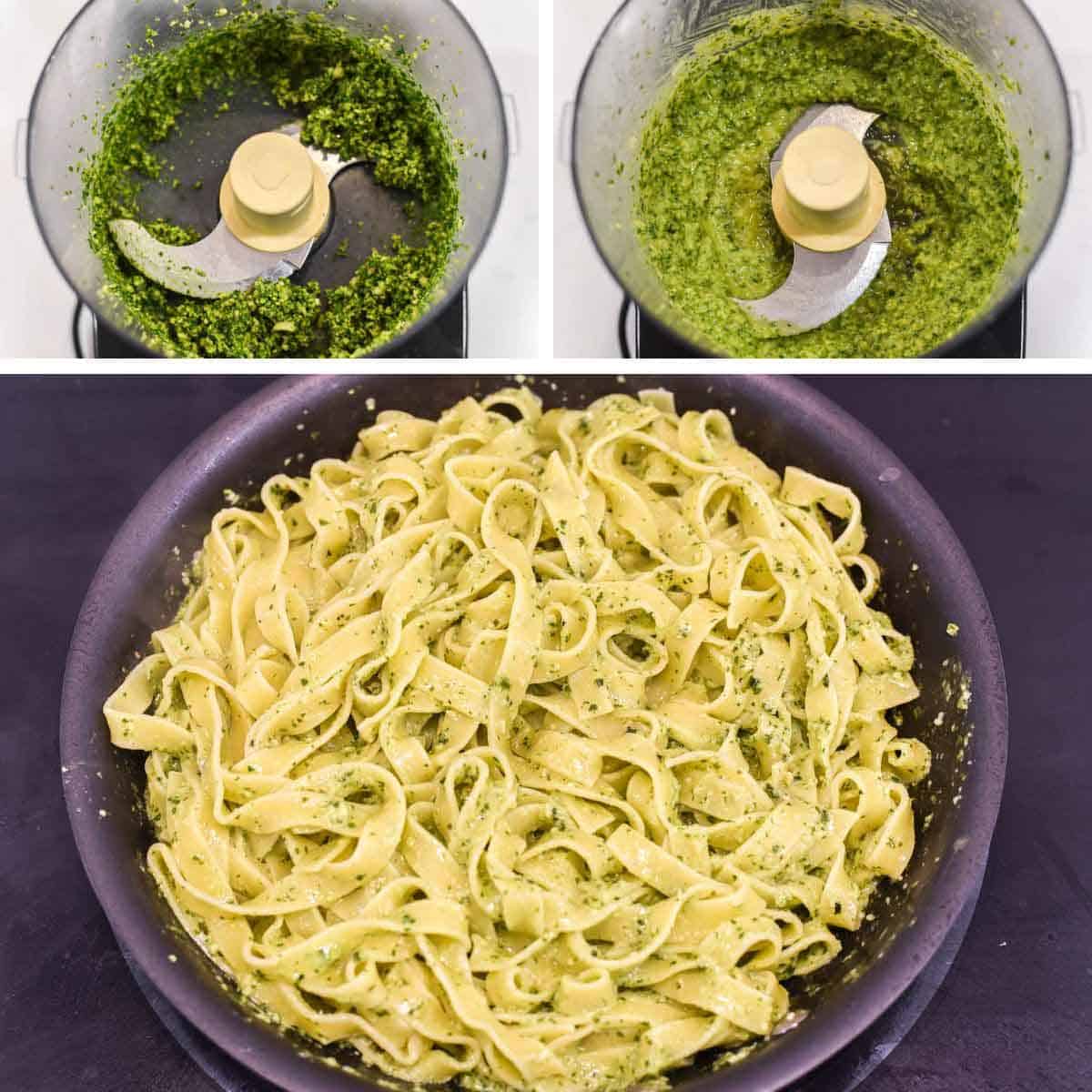
In a food processor, combine the basil, pine nuts, garlic, and salt, blending until well mixed. While the processor is running, pour in the olive oil and lemon juice, then incorporate the cheese.
Transfer the cooked pasta to a bowl or skillet, add the pesto and a splash of pasta water, tossing until everything is evenly coated.
FAQs
While homemade pesto is super easy to make it will oxidize when exposed to air or heated up.
If you want your pesto to remain bright green, fill a large bowl with cold water and several ice cubes and set aside. Bring a large pot of water to a boil. Add a pinch of salt and basil leaves and blanch for 15 seconds. Immediately remove the basil from the boiling water and place in the ice water bath.
Once cooled, drain. Squeeze the leaves to remove all excess water and lay them on a paper towel. To be honest, I took the stop here to make the pictures look good, but you can skip!
Tagliatelle is a broad, flat pasta with a ribbon-like shape, while linguini is a narrower, flatter pasta. The key distinction lies in the width and thickness.
It really depends on what type of pasta you want and if you have the time. Fresh pasta is definitely better.
If you want to use fettuccine which is similar to tagliatelle, try this one by Anne Burrell. It is my go-to homemade pasta recipe. Otherwise dried works great.
It will last about 3 days if stored in an airtight container in the fridge.
My preferred method is placing the leftover pasta in a skillet with a splash of water. Cook on medium-low until heated through.
You can also microwave. Place in a microwave-proof bowl with a splash of water and microwave for 1 minute. Stir and microwave for another minute or until heated through.
Types of Pesto I Can Make
Classic pesto is typically made with basil, garlic, pine nuts, coarse salt, Parmesan cheese and blended with olive oil. The beauty lies in the flexibility to experiment with various herbs and nuts, allowing you to adjust the oil quantity for your desired thickness. Some variations include:
Herbs/Greens to Use in Pesto: Basil, Parsley, Cilantro, Mint, Sage, Kale, Spinach, Arugula
Nuts/Seeds to Use in Pesto: Pine Nuts, Pistachios, Pecans, Almonds, Walnuts, Sunflower Seeds, Pumpkin Seeds, Sesame Seeds, Cashew
Equipment
The equipment you use is important to how the tagliatelle pesto turns out. What is needed is the following:
- Food processor - Used to make the pesto.
- Large bowl - Need a bowl to be able to mix together the ingredients.
- Spoon - You want a good wooden spoon to stir everything together.
- Cheese grater - I mentioned multiple time but use a cheese block and grate yourself.
Pro Tips/Recipe Notes
- Opt for freshly grated Parmesan to enhance the sauce, avoiding pre-shredded options that may include wood pulp. Choosing blocks of Parmesan cheese is not only more cost-effective but ensures a purer product.
- Use freshly squeezed lemon juice as it tastes better and is cheaper. No store-bought bottle.
- Ensure that the water used for cooking the pasta is salted, as a portion of the flavor is derived from it.
- Avoid heating your pesto, as doing so diminishes some of its aroma and flavor. Simply add it to the hot pasta.
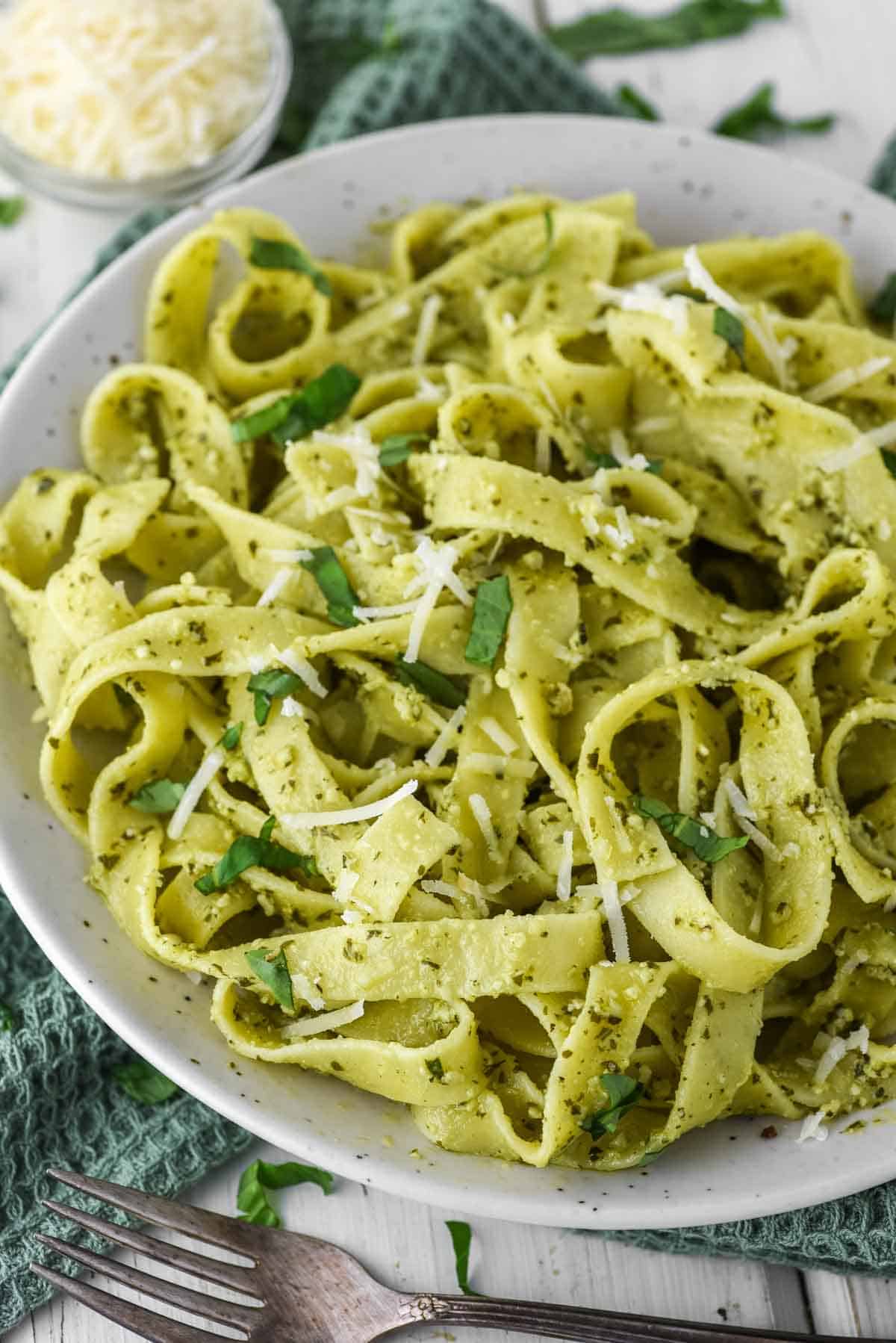
Similar Recipes
If you’ve tried this tagliatelle pesto recipe or any other recipe on Chisel & Fork, please let me know how it turned out in the comments below! You can also follow me on Facebook, Instagram, Pinterest and YouTube to see more tasty meals and anything else I'm up to.
Tagliatelle Pesto
Ingredients
- 12 oz tagliatelle
- 2 cups basil (2 oz or 56 grams)
- ⅓ cup pine nuts, toasted
- 2 garlic cloves
- ¼ teaspoon salt
- 6 tablespoon olive oil
- 2 tablespoon lemon juice, freshly squeezed
- ½ cup grated Parmesan cheese
Instructions
- Bring a large pot of salted water to boil. Cook the tagliatelle to al dente and save ½ cup of pasta water.
- Add basil, pine nuts, garlic, and salt to blender or food processor and blend until thoroughly combined.
- With blender or food processor on, slowly add olive oil and lemon juice until well combined. Add the Parmesan and blend for 10 more seconds until just combined.
- Add the cooked pasta to a mixing bowl. Add the pesto and ¼ cup of reserved pasta water, tossing to combine. Add more water if still too thick. Top with some Parmesan and fresh basil.
Notes
- Opt for freshly grated Parmesan to enhance the sauce, avoiding pre-shredded options that may include wood pulp. Choosing blocks of Parmesan cheese is not only more cost-effective but ensures a purer product.
- Use freshly squeezed lemon juice as it tastes better and is cheaper. No store-bought bottle.
- Ensure that the water used for cooking the pasta is salted, as a portion of the flavor is derived from it.
- Avoid heating your pesto, as doing so diminishes some of its aroma and flavor. Simply add it to the hot pasta.
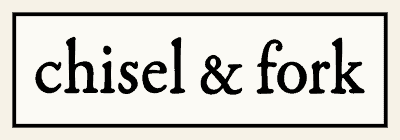

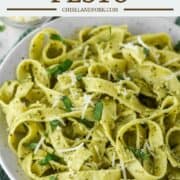
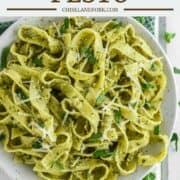
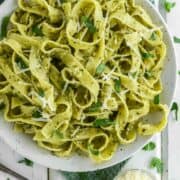
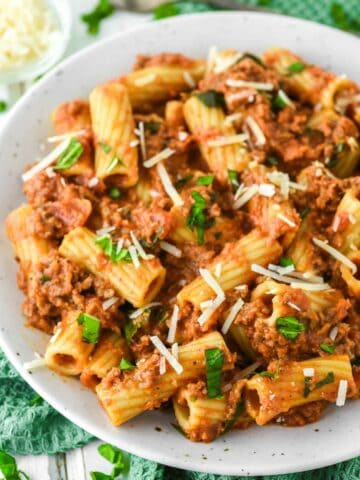
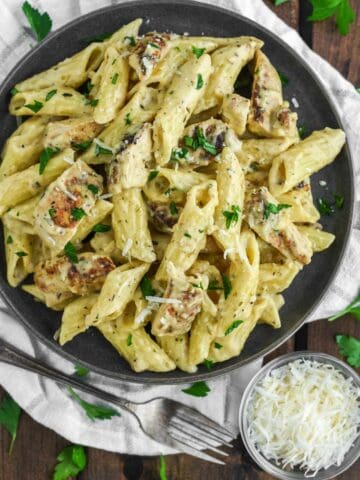
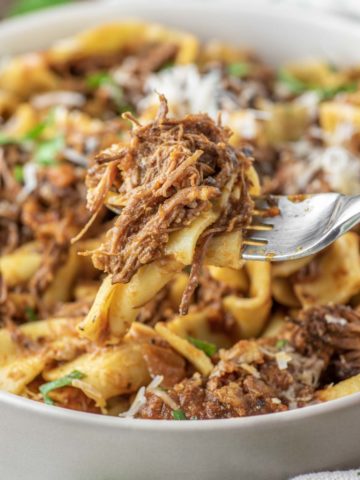
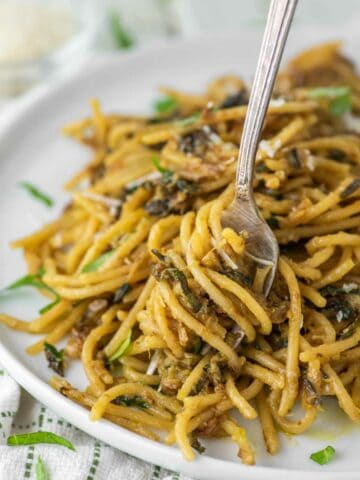
Leave a Reply